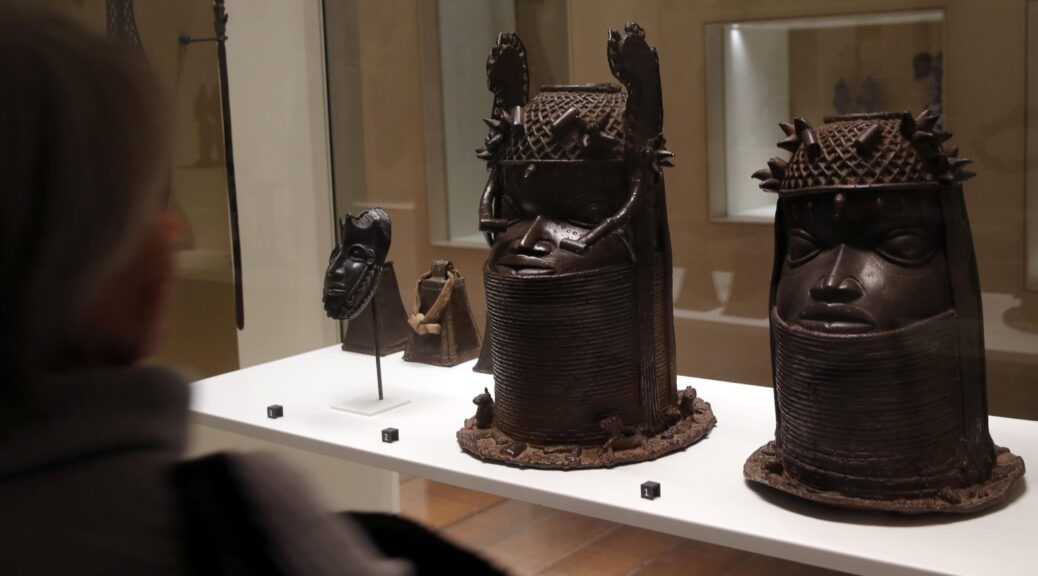Africa’s looted artifacts are being put up for sale during the global economic crisis
Hundreds of objects were stolen by European and British museums and institutions from africa countries more than a century ago.
Following decades of appeals for African pieces — such as the Benin bronzes to return home, the homecoming of the looted artworks finally began looking like a real possibility.
Nevertheless, a new market for African artifacts and art arose in the midst of the global economic crisis fuelled by the spread of the coronavirus which has destroyed economies.
Christie’s, the British auction house, announced a curated “Arts of Africa, Oceania and North America” sale in Paris which includes African art such as the newly discovered Akan terracotta head (Ghana), Benin Bronze and an Urhobo figure (Nigeria).
The artifacts from all around Africa including Nigeria, Ghana, Gabon, and the Democratic Republic of Congo are valued from €30,000 to €900,000.
The Christie’s auction is embroiled in controversy. Christie’s can only guarantee the origin of the Bronze head as far back as 1890-1949 as a part of the Frederick Wolff-Knize collection that was shown in Vienna and New York.
Christie’s did not respond to a request for comment.

Artifacts from Gabon, Nigeria, and Equatorial Guinea. Each valued at over $250,000 to as high as $500,000
The Benin Bronze plaques that are offered by Christie’s are very similar to Bronze plaques from the St Petersburg and Berlin Museums; artworks with a well-documented history as part of looted artifacts from the Royal Court in the invasion of Benin City in 1897.
Sotheby’s, the storied British-founded American auction house on May 27 announced an ambitious sale of “The Clyman Fang Head,” a statue with an estimated value of between $2.5 million and $4 million from the collection of Sidney and Bernice Clyman.
A total of 32 African artworks from the collection will be offered across a series of auctions at Sotheby’s.
Auctions of valuable African artifacts, some of which could be identified as candidates for repatriation to their lands of origin by activists, would be controversial in normal times but particularly so during the ongoing global pandemic and its attendant economic fallout.
Both Sotheby’s and Christie’s have moved auctions online for this reason. Sotheby’s said in March it has seen an expansion of interest in African art auctions with a more diverse customer base online.
French report
Some might have assumed auctions like these ones might dwindle after a high-profile report by Senegalese writer/economist Felwine Sarr and French historian Bénédicte Savoy called for thousands of African artworks in French museums taken during the colonial period to be returned to the continent.
The report commissioned by French President Emmanuel Macron called for a change in French law to allow the restitution of cultural works to Africa.
In a meeting with students in Burkina Faso in 2017 Macron said “Africa’s heritage must be showcased in Paris—but also in Dakar, in Lagos, in Cotonou.
This will be one of my priorities. Starting today, and over the next five years, I want to move toward allowing for the temporary or definitive restitution of African cultural heritage to Africa.”
Plenty of African art is domiciled outside the continent, including statues and thrones with hundreds of thousands of historical artifacts housed in Belgium, the UK, Austria, and Germany. The French report estimates the British Museum alone has a collection of around 69,000 works from Africa.

